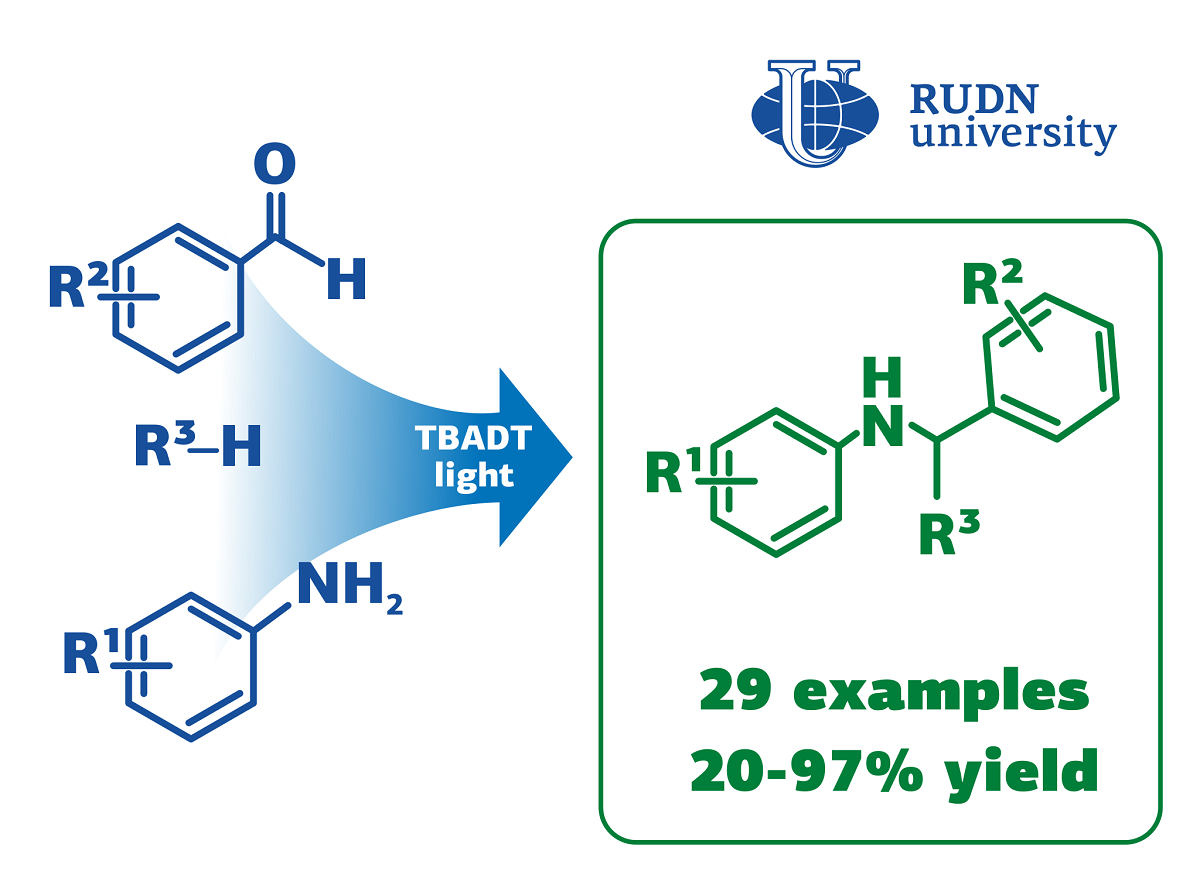RUDN chemists have discovered an economical method for the synthesis of secondary amines

Amines are derivatives of ammonia in which one or more hydrogen atoms are replaced by hydrocarbon radicals. Radicals can vary, so both the physical and chemical properties of amines are different. They are used for the synthesis of pesticides, medicines, dyes, repellents, fuel additives and other compounds. One of the ways to obtain secondary amines with two radicals is the alkylation of other nitrogen-containing organic compounds — imines. Usually, reactions of organometallic compounds are used for this, but their high reactivity complicates the process. Therefore, chemists are looking for more convenient ways to obtain secondary amines. The RUDN University chemists proposed such an algorithm.
“Our study, therefore, focuses on the development of a broadly applicable strategy for the alkylation imines for the construction of functionalized secondary amines under mild reaction conditions. This atom economic transformation exploits the intrinsic electrophilicity of imines. the fine-tuning of electronic properties of the starting materials allows the formation of a wide variety of products”, said Leonid G. Voskressensky, Doctor of Chemistry, Dean of the Faculty of Science of RUDN University
The reaction proposed by chemists is a multicomponent reaction. It means that not two, but several substances come together in a single reaction vessel. This is efficient both in terms of the substances waste and the costs of auxiliary reagents. RUDN University chemists mixed aldehyde, vanillin and tetrahydrofuran under the irradiation by visible violet light (wavelength is 390 nm). The initiator of the radicals was tetrabutylammonium decatungstate (TBADT). After 24 hours, the final secondary amine was formed. The researchers conducted a series of similar experiments, optimizing the reaction conditions, reagents, and their quantities. Then they tested different starting compounds and received a total of 29 types of reaction products.
As a result, the RUDN University chemists managed to achieve 85% of the reaction efficiency— which means that the amount of the product actually obtained is 85% of the theoretically calculated value. Acetonitrile turned out to be the best solvent, and no auxiliary substances were needed at all. By selecting the optimal aniline, the researchers were able to achieve 97% yield of secondary amine.
“We were able to develop an efficient strategy for the multicomponent generation of secondary amines without the need of any additive. This robust procedure has demonstrated a feasible applicability for variously substituted starting materials, allowing to skilfully address selectivity challenges related to the use of TBADT as a photocatalyst”, said Erik Van der Eycken, the head of the Joint Institute for Chemical Research at RUDN University.
The results are published in the journal Molecular Catalysis.
Matilda Pavlovna Mityaeva was born in 1925. In November 1942, she volunteered for frontline duty. She participated in the Great Patriotic War from November 1942 to June 1945 as part of the 53rd Infantry Division of the 475th Infantry Regiment. She was wounded twice.
The team led by Sergey Zyryanov, Head of the Department of General and Clinical Pharmacology, became the winner of the All-Russian competition of scientific projects "Technologies for Human Health".
RUDN University constantly adapts to the changes of the modern world and responds to challenges flexibly. This allows us to keep the standard of a world-class research university. The sphere of science is no exception. Peter Dokukin, Head of the Research Division, presented the updated R&D Programme at the meeting of the RUDN University Academic Council.
Matilda Pavlovna Mityaeva was born in 1925. In November 1942, she volunteered for frontline duty. She participated in the Great Patriotic War from November 1942 to June 1945 as part of the 53rd Infantry Division of the 475th Infantry Regiment. She was wounded twice.
The team led by Sergey Zyryanov, Head of the Department of General and Clinical Pharmacology, became the winner of the All-Russian competition of scientific projects "Technologies for Human Health".
RUDN University constantly adapts to the changes of the modern world and responds to challenges flexibly. This allows us to keep the standard of a world-class research university. The sphere of science is no exception. Peter Dokukin, Head of the Research Division, presented the updated R&D Programme at the meeting of the RUDN University Academic Council.